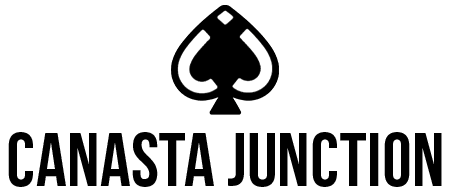Roles and Responsibilities in a Game of Canasta
Attribution of Roles in Canasta
Setting Up the Table:
Before diving into gameplay, it’s crucial to understand the initial setup and the roles and responsibilities in a game of Canasta. Typically, four players sit around a square card table, equipped with a scorepad, a pencil, and a revolving tray for the draw and discard piles. Two Canasta decks are used: one for the current hand and one pre-shuffled for the next, minimizing downtime between hands. The game proceeds clockwise.
Choosing Seats and Partners:
Canasta is a team-based game, so establishing partnerships before seating is essential. Partners sit opposite each other. To randomly determine teams, shuffle two red and two black cards, and have each player draw one; matching colors indicate partners. While partner selection can be random, seat assignments and role rotations are systematic and crucial for smooth gameplay.
Definition and responsibilities of roles in Canasta
Role of the Scorekeeper:
The Scorekeeper is a crucial role that remains consistent throughout the game. This player is responsible for recording scores at the end of each hand, adding them to the cumulative totals, and announcing scores and meld requirements at the start of each hand. The game concludes when one team reaches 8,500 points. Initially, the player to the left of the Scorekeeper serves as the Dealer.
Responsibilities of the Cutter:
Seated to the right of the Dealer, the Cutter handles the deck in a specific manner. After taking a small number of cards (at least twelve) from the top of a shuffled deck, the Cutter passes the remainder to the Dealer. The Cutter then counts eight cards from the bottom of their stack and places them face down on the left side of the revolving tray to form the bottom of the draw pile. The ninth card is placed face down but perpendicular to signify the deck’s depletion. Any remaining cards are placed on top of the Turn Card.
Duties of the Dealer:
To the left of the Cutter, the Dealer receives the bottom portion of the cut cards and deals thirteen cards to each player, starting with the player to their left and proceeding clockwise. Players verify their hand count before the first move, which begins with the player to the Dealer’s left. If the discard pile is empty, the first player must draw from the deck.
Role of the Shuffler:
The initial Shuffler is the player to the right of the Scorekeeper. They shuffle the first deck while the Scorekeeper shuffles the second deck for the next hand. From the second hand onward, only one Shuffler is needed. The Shuffler then passes the shuffled deck to the Cutter, ensuring a seamless flow between hands.
Rotation for More Enjoyment:
Rotation of Responsibilities:
At the end of each hand, roles (except for the Scorekeeper) rotate clockwise. This systematic rotation ensures that every player experiences each role, contributing to a balanced and dynamic game.

All the Rules concerning Modern Canasta can be found in The Ultimate Guide to Modern Canasta which is available just by clicking here!


